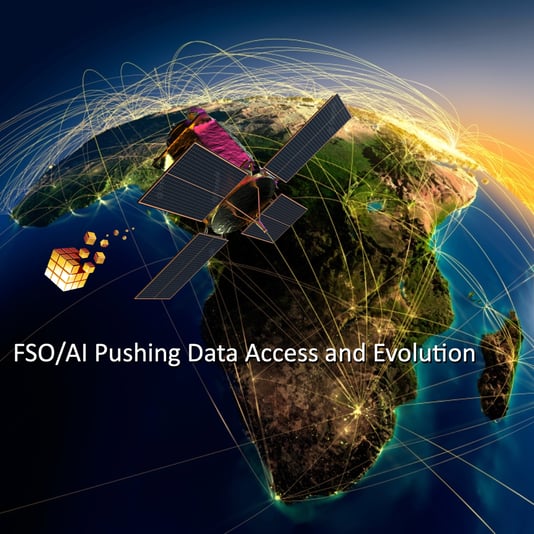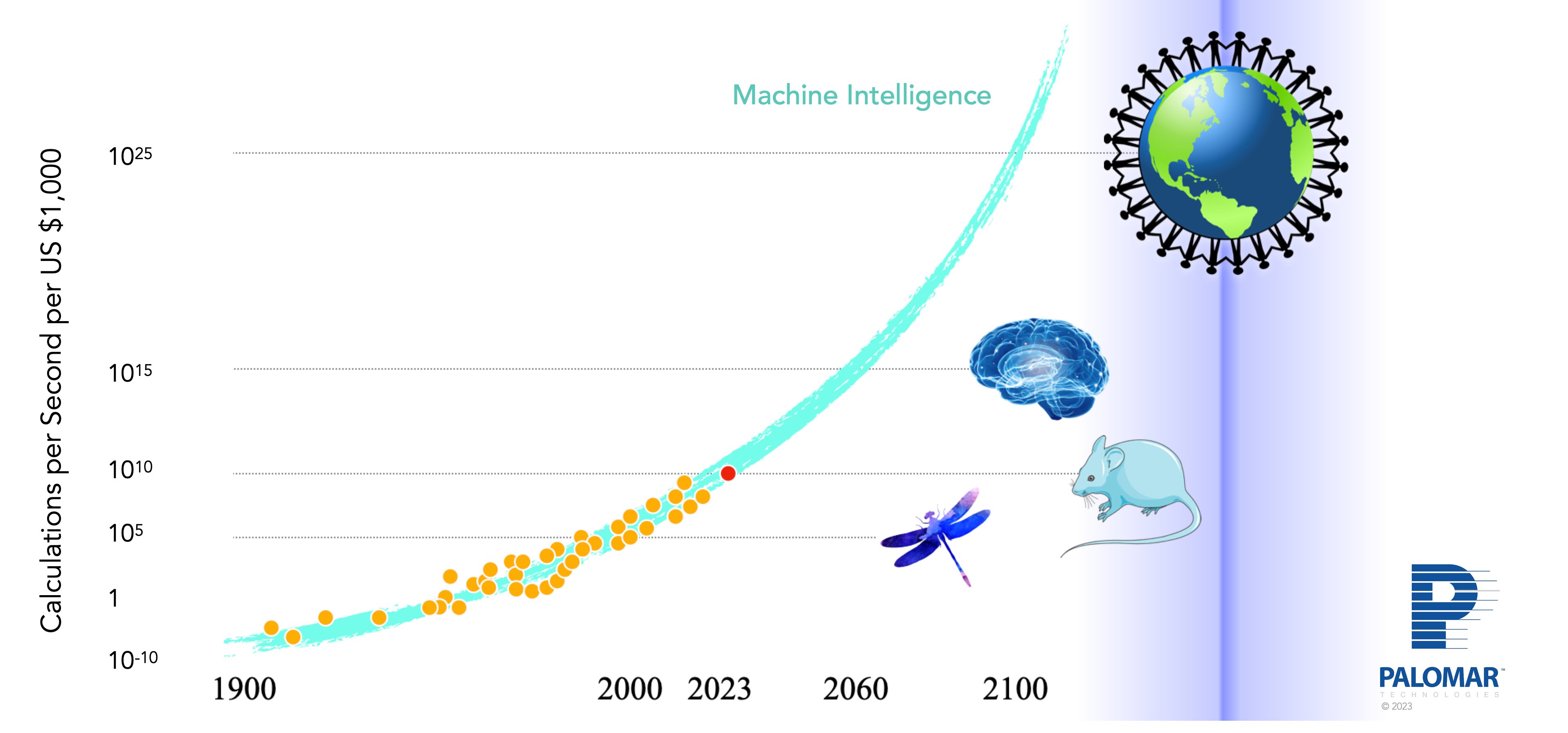
In a previous article, we noted that the next generation of 6G and quantum encrypted communications will require the extensive use of free space optics (FSO) to supplement fiber-based metropolitan networks and provide the infrastructure necessary to create a truly global and ubiquitous service, enabling a new era of digitization, ranging from autonomization to artificial intelligence, but most critically of all, quantum encryption and communication. Easy to miss, is the fact that the same factors that are revolutionizing the technology are also revolutionizing access.
More particularly allowing the developing world—and remote areas globally— to jump ahead and benefit from the digital age without the expensive, and often extremely impractical stages of physical infrastructure development, through which Western countries had no choice but to engage. For those familiar with the New Economies, this “leapfrogging” happened previously with the advent of mobile phone communications and wireless internet. FSO will provide a third wave of technological catch-up and economic growth.
While this is clear, there are unknowns to solve. Beneath the surface of this amazing potential, are a series of inevitable technical conundrums to overcome. Among the most daunting, is scaling up to meet the anticipated growth in demand —over the next decade and beyond. Billions more devices require more data and data (compute) processing power at a factor growth rate of 30 per decade, which may seem manageable until we realize that is close to 1000-fold increase over two decades (30 x 30). This seismic growth in data feeds back into demand for FSO (as well as conventional fiber), cloud, data processing and edge computing, which then enables more devices, requiring more processing power, and so the cycle continues.
Figure 1. The Exponential Growth of Machine Intelligence
No greater window into this intense development melee exists than a fascinating sub-plot. While it is true that the drive to FSO is being forcefully pushed by existing dynamics within technologies, digitization and economic development, simultaneously it is being irresistibly pulled by the wider synergies of machine learning and artificial intelligence (AI). This wider synergy has many stark characteristics that can be challenging to fully appreciate, but perhaps the starkest is the speed, inevitability of type of advances. In respect to computing power—to which the development of AI is inextricably linked—the illustration, in Figure 1 below, shows the extraordinary dimensions involved.
It took a century for machine intelligence to equal that of an insect, thereafter two decades to reach equivalence with a mouse, but the point of singularity where equivalence is reached with the human brain is anticipated by 2060 at the latest, and all human brains by the end of the century. For those familiar with the fun of Water Parks, a good analogy is the super tall water slide that fills with fear when one is sat atop, but gives way to an inevitable rush once the tipping point is reached.
If the implications of the speed and final significance of this level of machine learning are impossible to predict, what is both obvious and relevant to those reading this article, is that development and growth in demand for optoelectronic and a range of extremely sophisticated mechanical support devices to serve the FSO/AI infrastructure remains more than robust, even, and perhaps especially, in the current economic headwinds and political uncertainties. This is no mere conjecture. The demand levels anticipated require serious up-front money today to be invested today in development and manufacturing to make this happen tomorrow.
Even a brief review of market data in this respect shows that is happening on a significant scale. If that is the good news for those who supply this market, opportunities will not come to the passive, but to those who can help solve some of the problems. Before looking at some of these, we quickly review the fundamentals of FSO before turning our attention to these more technically pragmatic issues.
Instead of using expensive and expensive to install optical fiber, FSO sends data through the air, vacuum or celestial space on the principle of line-of-sight transmission/reception of light (photons) working in the IR spectrum and thus outside the constraints (and very significant costs) of licensing. More broadly, FSO receives considerable impetus from frankly outstanding advances made in silicon photonic integrated devices, especially as regards price, miniaturization, packaging, but above all, speed and power efficiency. Finally, in regard to scale, such transmissions can be global or local. As we have previously noted, the latter enable the New Economies (and others) to enjoy secure and fast data without the cost of laying fiber.
In respect the technological and developmental challenges to which we just alluded, perhaps the greatest are two-fold; (i) to compensate for impediments and distortions created by the atmosphere (and occasionally in the vacuum of space) as well as the inevitability of degradation; and secondly, (ii) maintain line of sight. Both of these are in the process of being tackled respectively through highly advanced digital signal processing software and physically adaptive optic systems. The latter requires potentially complex and fast responses, including utilizing fluidic lenses and/or mirrors of exceptional smoothness and maneuverability. Simultaneously, complementary systems (including dedicated FSO transceivers) must be developed to support the wider infrastructure.
As with commitments to invest, the development of these next generation of FSO transceivers are on the published roadmaps of a number of publicly quoted opto-electronic leaders, with one emphasis being placed on optimizing bit-error-rate and signal-to-noise ratio at the receiver. Almost certainly these will be developed within the confines of hybrid solutions, all of which, at the end of the day, must be cost effective. This perhaps, is the greatest hurdle of all and finds especially sharp focus in packaging “do-ability” and cost.
Beyond this, there is a significant and greater context. If those devices intended for outer-space use need to pass the high benchmark of robustness and dependability, those for the more ubiquitous, but much smaller cube-sats, doubly so (since there is little space for back-ups). Though significant, the huge physical stresses of getting devices into orbit are often overlooked, and as we have just said, amplified when the demands of miniaturization and extreme reliability are added.
At a theoretical level, device innovation and design follows a clear course of logic, but when this translates into actual device development, road-blocks seemingly come out of nowhere. New materials, meta-materials, novel structures, or simply slightly modified, sizes and shapes all impact both development and packaging processes, making, what from drawing board and prototype perspective seems a very minor set of changes—adding a few more elements to a slightly tighter build area—into something that becomes a huge obstacle. Rather like a rubrics cube, While the latter is very infrequent, impediments that take time consuming efforts to resolve are not. As we have seen in this review, FSO technology throws up development challenges commensurate to the vast range of light engines and receivers utilizing modulation, deformable mirrors, liquid lenses, new and established materials, epoxies, etc., all within the context of sizing, integration, population density, hybridization and scalability. This is where successful experience of providing packaging solutions yesterday, offers significant commercial value today. More than critical in an era of growing demand, supply interruptions, political tensions, global uncertainties, more aggressive competition and inflationary pressures.
Palomar’s packaging systems have precisely evolved out from this kind of historical experience allowing current developers and customers to exploit process reliability and agility, as equally, tap into support from our systems engineers’ collective experience in meeting the challenges of new materials and construction approaches just implied. These proven capabilities mean new customers can consider Palomar’s bonders, vacuum reflow systems and assembly service options, with confidence, knowing that we will understand the synergies needed to work with engineers and projects to create a commercially viable product while staying ahead of the competition.
----
Dr. Anthony O'Sullivan
Strategic Market Research Specialist
Palomar Technologies